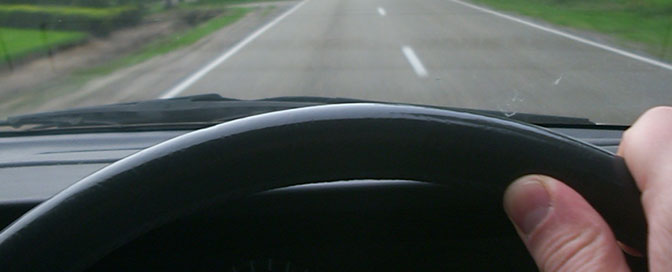Lesson Information
Restricted Licence, Full Licence & training for licence-holders
RESTRICTED LICENCE TRAINING
Total Driver Training:
This is where we teach the student from the start, through to the point where they are ready to sit and pass their Restricted Licence. It would typically require 25 hours of instruction in a manual and 20 hours in an automatic.
At the end of this course of training, the student will be able to manipulate the vehicle
in city, suburban and open road conditions, on the flat or on hills, day or night (optional) and in the wet. To at least the standard required for a Restricted Licence.
Emphasis will be put on developing the ability to drive safely and smoothly, in compliance with the road code, being observant and aware of hazards and with consideration for other road users.
Restricted Licence Test Preparation:
This is where the student has had some instruction from family and/or friends, and needs finishing training in preparation for the Restricted Licence test.
This tends to vary between about 3-10 hours of driving instruction, depending upon the level of the student.
On completion, the student will be at least of the standard required for a Restricted Licence and will be familiar with the format of the test.
We will also encourage safe, smooth driving, in compliance with the road code, as well as observant driving with awareness of hazards and consideration for other road users.
Restricted Licence Test: Sitting the Restricted Licence is usually done in the student’s or student’s family’s car, unless the student does not have a car available to them. A Waimack Driving School car is only available for tests at Northwood. The last lesson or two (usually a Practice Test) can be done in the student’s car.
FULL LICENCE TRAINING
Full Licence Preparation Training:
This is to prepare the student for the Full Licence test.
It will familiarise them with the format and requirements of the test, emphasising in particular:
- the promotion of good driver habits and the elimination of weak areas.
- the observation of and response to hazards.
It usually takes 1-2 lessons if the student has been driving a lot, and 3-5 lessons when their driving has been less frequent.
Our cars are available at our discretion for use in the Full Licence test.
TRAINING FOR LICENCE HOLDERS
New To New Zealand Driver Conversion:
This is aimed at new New Zealanders who are required to, or want to, take instruction to familiarise themselves with the theory and practical requirements of driving in New Zealand.
This would typically involve 5-10 hours of driving instruction.
It will encourage safe, smooth driving, in compliance with the road code, as well as observant driving with awareness of hazards and consideration for other road users.
New Zealand Licence Holder Refresher:
This is aimed at people who drive company vehicles as part of their work, or people who drive private vehicles who identify the need within their driving for improvement or updating.
It may also be a requirement of an insurance company in a situation where there has been a high claim history.
This would typically require 2-3 hours of driving instruction.
Older Driver Refresher Training:
This is to assist senior drivers to feel more confident on the road.
It would usually require 2-3 hours of driving instruction.
It will encourage safe compliance with the law whilst avoiding delaying other traffic.
FOOTNOTES
- Any training is a two-way process.
It requires good quality instruction that is tailored to the specific needs and learning style of the student.
It also requires effort on the part of the student. The more effort that they put in, and the more motivated that they are, the sooner they will achieve the required result.
The training will be more efficient if it has momentum and if it is made a priority. - Progress of the student will benefit from as much practice as possible between lessons.
- Sensible footwear is very important for driving, particularly when learning. Shoes should be enclosed, with a sole that allows feel of the pedals. Very wide shoes, loose fitting shoes and shoes with thick soles, high heels, pointy toes or no back support should be avoided.
- Training is often measured by the outcome of the test. Some people find test situations very difficult, and as a result don’t drive at their best, or make mistakes which are not typical of their driving. At times like these it is important to remember that you have actually reached the standard, despite the outcome of the test, but you will still need to demonstrate what you are actually capable of to a tester!!
